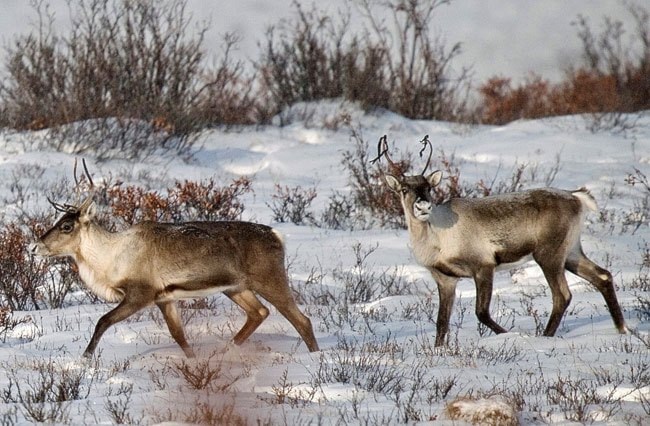A new plan is in place to protect the Porcupine caribou herd.
Much was made of the signing of a harvest management plan last summer. But, while that deal was long on aspirations to protect the wide-roving herd, it was short on nitty-gritty details on how to preserve the herd.
That’s where the recently-signed implementation plan comes in. It puts flesh on the bones of the harvest management plan.
One big concern addressed by the new plan is how to accurately count the number of caribou taken each year.
Each year it’s believed that approximately 4,000 Porcupine caribou are shot, although this number is spotty, because of unreported kills.
“That’s one of the challenges of harvest management,” said Joe Tetlichi, chair of the Porcupine Caribou Management Board. “How do we get the harvest data?”
The new deal requires native groups to conduct door-to-door surveys in their communities to help corroborate the harvest numbers kept by conservation officers at check stations.
Another detail, to be hashed-out by August, is how native users will divvy-up the total allowed harvest for the year.
There are eight governments with a stake in the caribou’s survival – five native groups, the Yukon and Northwest Territories and Ottawa. That’s made talks sluggish at best.
Tetlichi hailed the new implementation agreement as evidence all groups want to keep the herd healthy. “The important thing is that all parties are working together,” he said.
Until this spring, things were looking grim for the herd. While an aerial photocensus hadn’t been conducted for nine years, computer models and on-the-ground observations of calf mortality all pointed to a steep decline in the herd’s size since it numbered 178,000 in 1989.
Then, in March, biologists announced good news: the herd’s size was reckoned to be 169,000 animals, based on aerial photographs taken in the summer of 2010. That’s enough caribou to put the herd back into the “green zone,” and to lift any controversial hunting restrictions.
In the autumn of 2009, the Yukon government banned hunting the herd’s cows. At the time, the herd’s size was estimated at between 90,000 and 100,000 animals - precariously close to a tipping point biologists believed would cause the herd size to further plummet, if hunting continued unchecked.
The ban provoked an uproar among some First Nation and Inuvialiut hunters, who felt their constitutionally protected right to hunt were being trammelled. With the herd’s size revised upwards by nearly 50,000 animals, the territory is now reviewing its regulations.
The implementation plan also calls for more hunter education. One such workshop was held earlier this month.
Contact John Thompson at johnt@yukon-news.com.
